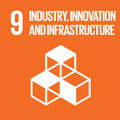- Docente: Daniela Boldini
- Credits: 6
- SSD: ING-IND/28
- Language: Italian
- Teaching Mode: In-person learning (entirely or partially)
- Campus: Bologna
-
Corso:
Second cycle degree programme (LM) in
Civil Engineering (cod. 0930)
Also valid for Second cycle degree programme (LM) in Environmental Engineering (cod. 8894)
Course contents
- Rock-mass characterisation for tunnel construction
- Exploration methods for the in situ characterisation
- Structural characteristics of the rock-masses
- Strength, deformability and permeability properties of rocks, discontinuities and rock-masses
- In situ stress measurement
- Geomechanical classifications for the rock-masses
- Definition of the design geotechnical profile
- Excavation and support methods for underground constructions
- Drill and blast excavation
- Excavation with mechanical tools
- Mechanised tunnelling in soils and rock-masses
- Support and reinforcement elements
- Soil improvement methods for tunnel excavation
- Analysis of the static conditions and interaction with support systems and with the environment
- State of stress and deformation around a tunnel
- Analysis of the soil-lining interaction
- Assessment of the stability conditions
- Interaction with groundwater surface
- Surface subsidence and interaction with existing structures
- General criteria for design and monitoring
- Monitoring during and after construction
- Observational method
- Austrian method and Adeco method
- Introduction to numerical modelling for tunnel design
- Exercises
- Rock material characterisation
- Joint orientation
- Joint spacing
- Geomechanical classifications of rock-masses
- Strength and deformability of rock material and rock-masses
- Evaluation of the effects induced by the drill and blast excavation
- State of stress and deformation around a circular tunnel in an elastic medium
- State of stress and deformation around a circular tunnel in an elasto-plastic medium
- Convergence-confinement method and state of stress in the lining
- Surface subsidence; face stability
Readings/Bibliography
Ribacchi R., Rotonda T., Graziani A., Boldini D., Tommasi P., Lembo-Fazio A. (2018). Meccanica delle Rocce. Teoria e Applicazioni nell’Ingegneria. Edizioni Efesto e Hevelius Edizioni.
Teaching methods
Class lessons, class and home exercises, visit to the LAGIRN lab of Rock Mechanics, technical visits at tunnels under construction.
As concerns the teaching methods of this course unit, all students must attend Module 1, 2 [https://www.unibo.it/en/services-and-opportunities/health-and-assistance/health-and-safety/online-course-on-health-and-safety-in-study-and-internship-areas] on Health and Safety online.
Assessment methods
Oral examination with exercise revision.
During the oral exam the student has to answer to 5 questions on the following points:
- question on one of the first 5 exercises
- question on the theoretical aspects covering the first part of the course dedicated to Rock Mechanics
- question on the excavation and support methods
- question on one of the last 5 exercises
- question on the theoretical aspects covering the second part of the course dedicated to Underground Constructions
Higher grades will be awarded to students who demonstrate an organic understanding of the subject, a high ability for critical application, and a clear and concise presentation of the contents. To obtain a passing grade, students are required to at least demonstrate a knowledge of the key concepts of the subject, some ability for critical application, and a comprehensible use of technical language. A failing grade will be awarded if the student shows knowledge gaps in key-concepts of the subject, inappropriate use of language, and/or logic failures in the analysis of the subject.
Teaching tools
- PowerPoint presentations
Office hours
See the website of Daniela Boldini
SDGs


This teaching activity contributes to the achievement of the Sustainable Development Goals of the UN 2030 Agenda.
